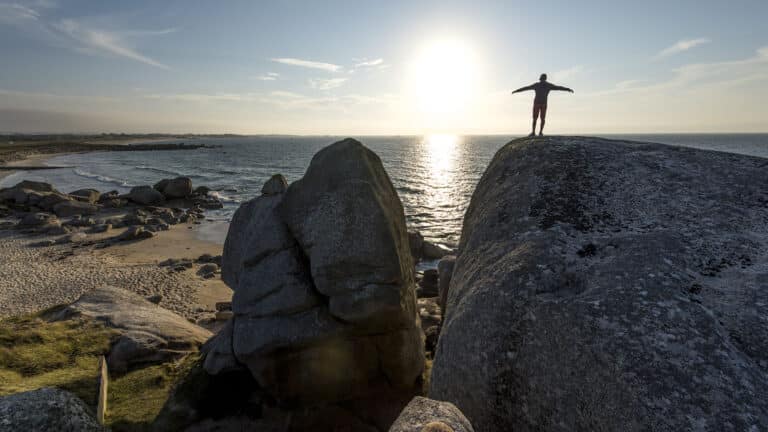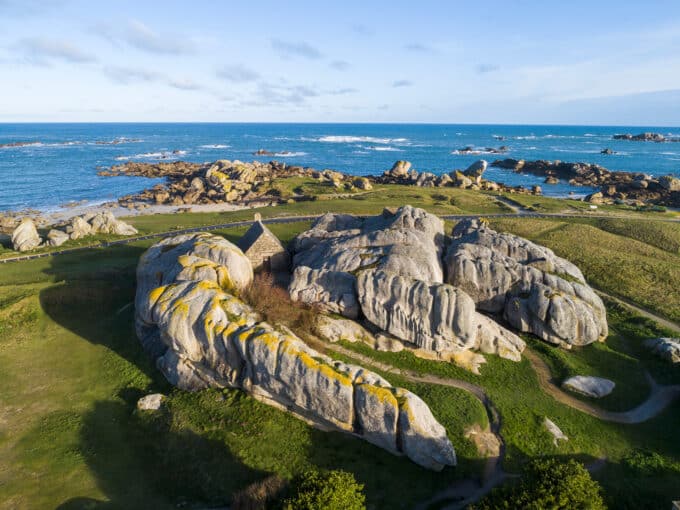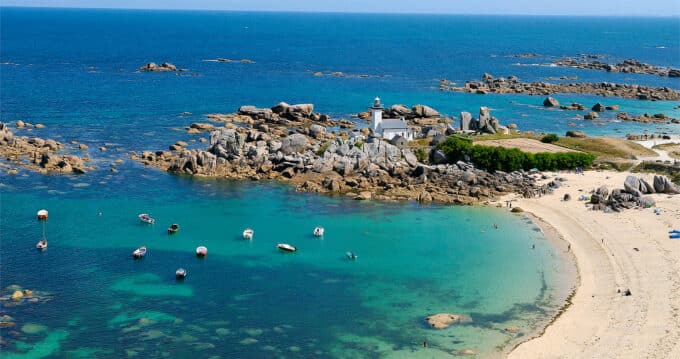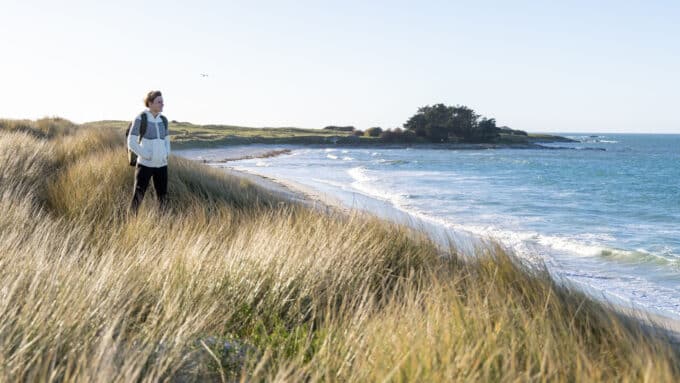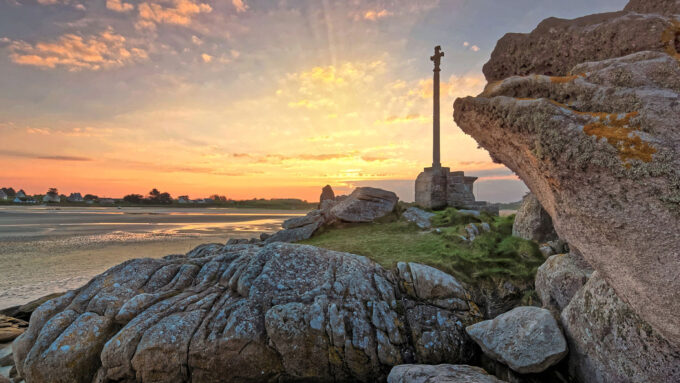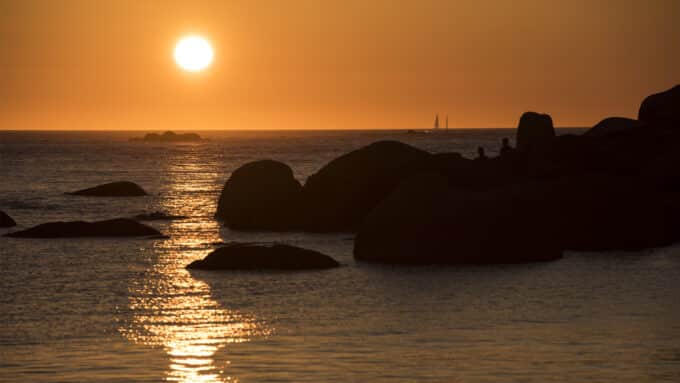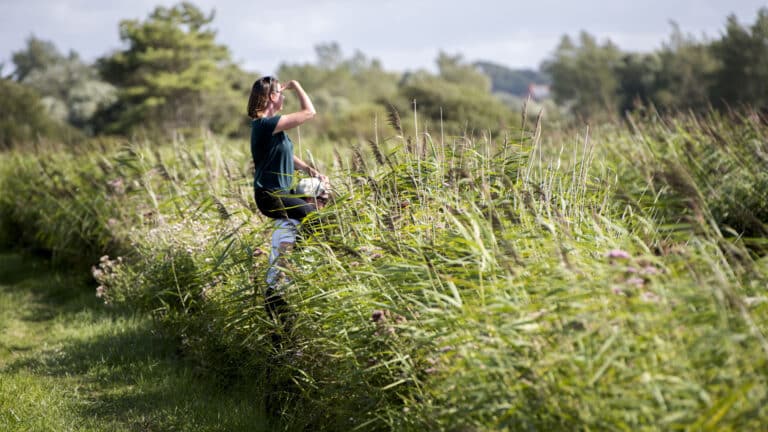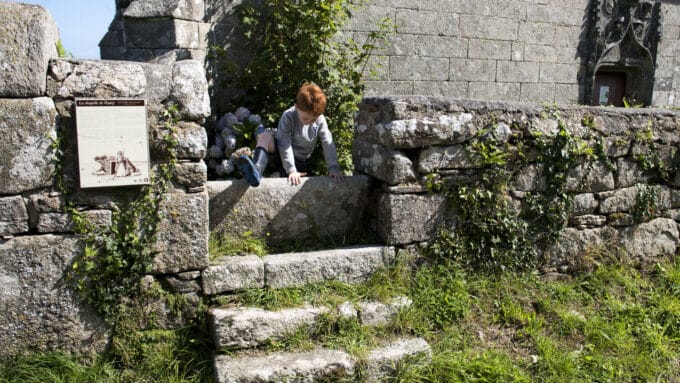Get your binoculars!
Bird watching on the Côte des Légendes
In autumn and winter, birds adorn the Côte des Légendes with their plumage and flapping wings.
Pierre Léon, a passionate ornithologist, gives you his advice on how to "capture" these stealthy animals, whose admiration can only be earned with a great deal of patience! We'd also like to thank him for providing us with his spots and photos of these beautiful animals.
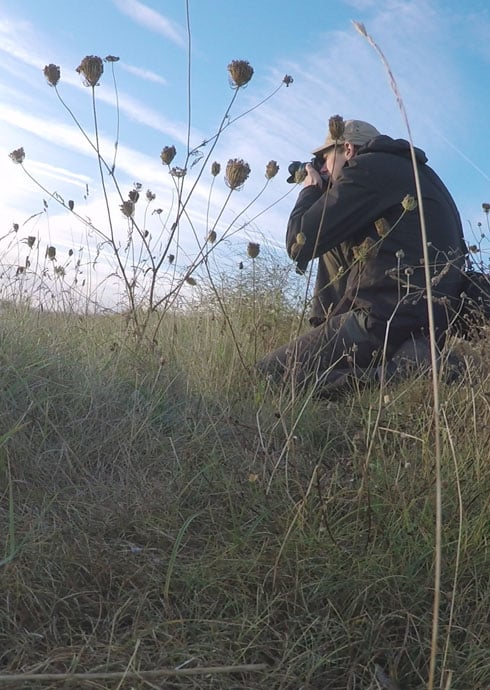
Before taking the plunge
How to observe?
The Côte des Légendes, from Guissény to Goulven, is indented with numerous granite points, between which stretch superb beaches of fine white sand. Beyond its original, harmonious aesthetics, this coast is home to rich bird populations.
While a few species deign to linger here to build their nests (gulls, mallards, shelducks, a few passerines such as pipits, larks and clammy wheatears), many of them come to us from faraway lands. Some simply stop off here on their long migratory journeys, others to take advantage of the mild temperatures and abundant food resources throughout the off-season.
Here are our recommendations for reducing the risk of bird disturbance:
- If you're bringing a dog with you, remember to keep it on a leash, or at least at your side, to prevent it from chasing a bird or disturbing a nest.
- Avoid getting too close to the birds. They'll fly away and you may never see them again. Be patient and let them get used to your presence.
- Ideally, you should be equipped with optical equipment (binoculars or, better still, spotting scopes). This will guarantee quality observation without the slightest discomfort.
- If you happen to spot a nest, make sure you stay away from it. Your presence at the nest site may subsequently lead to predation (dog, fox, rat...) on the brood.
Where can you see the birds?
Places of interest from Guissény to Goulven.
Click on the map below to see the species that can be observed at each location.
Natura 2000 zones
The Natura 2000 network brings together terrestrial and marine European nature sites. They are selected for the rarity or fragility of their fauna and/or flora. The network combines nature conservation with socio-economic concerns.
The 3 protected areas of the Côte des Légendes are designed to help visitors discover "Mother Nature", particularly through activities such as hiking:
- the Curnic marsh in Guissény
- the Langazel moors in Ploudaniel - Trémaouezan
- Goulven Bay and the Keremma dunes at Tréflez
Focus on :
The Curnic marsh
We asked Nicolas Loncle, in charge of Natura 2000 and natural spaces for the commune of Guissény, about the Curnic marsh.
"The heart of winter for birdwatching is December and January. But let's just say that wintering species are present from October to March. The coldest and shortest months will see the highest numbers. The first Brant geese arrive in Guissény in September and stay until early April. Whistling ducks join them around the same time.
On the beaches of the Vougot dike, groups of Dunlin, Sanderling and Great Gravelot can be numerous (a few hundred) from August onwards, and will gradually increase in numbers as they move into the depths of winter. As for waders, harlequin and barker sandpipers are present on the pond from August onwards, and common and white-shouldered sandpipers occasionally pass through. Whimbrels also make their typical call from August onwards.
Ducks on the pond are mainly represented by mallards in summer, with teal, scaup and scaup joining them as they head into winter. Great crested grebes and little grebes, present during the breeding season, are joined by migratory individuals.
The luckiest ones may observe the fleeting passage of a kingfisher that has come to spend the winter in the Curnic marsh..."
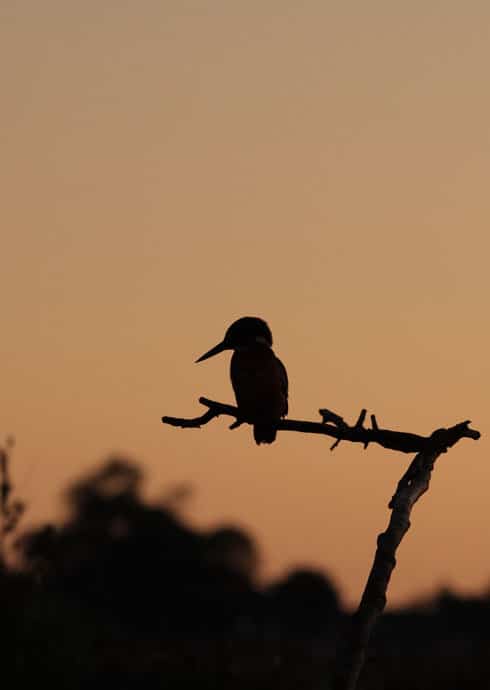
Focus on :
Shorebirds in Goulven Bay
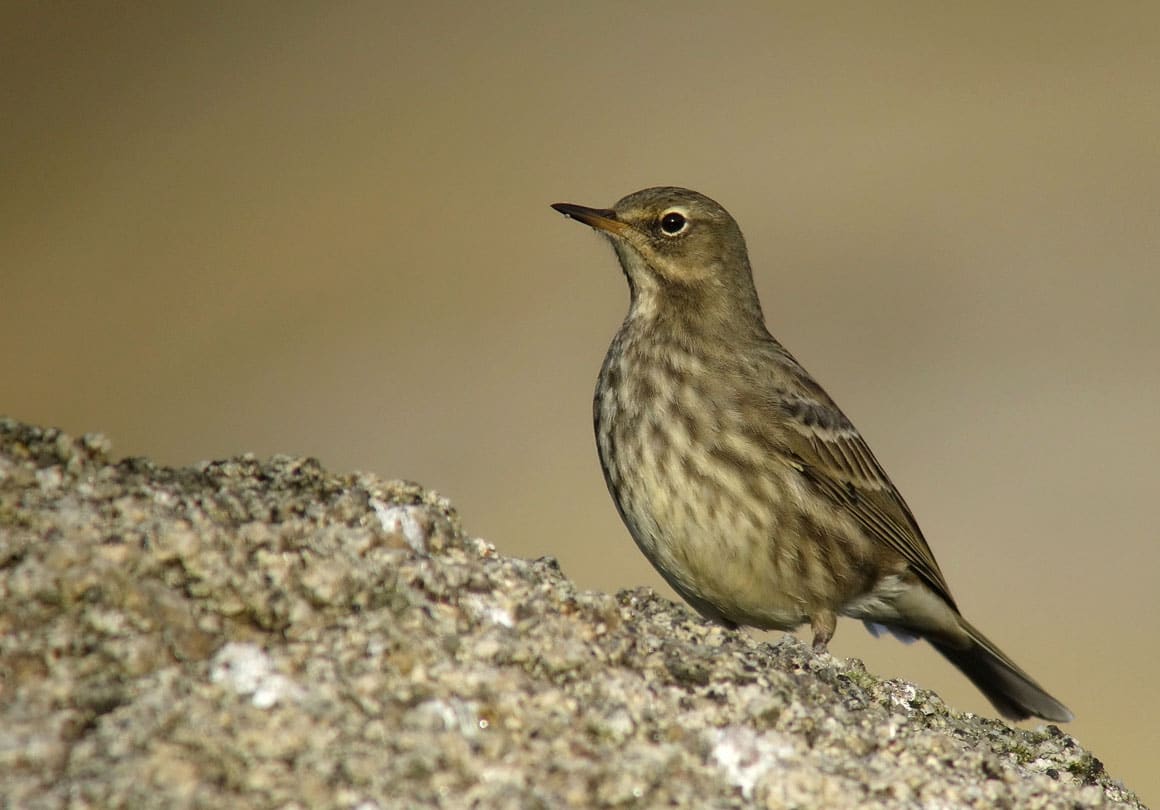
Loyal to his region
Sea Pipit
This small insectivorous passerine, a cousin of the wagtails, can be seen all year round on our coasts. All you have to do is sit on a rock overlooking the beach and, after a few minutes' patience, you'll discover this stealthy bird pacing the shallows, threading its way between the rocks or into a gap in the rocks, in search of its pittance (insects, worms, small crustaceans...). Its high-pitched call is often difficult to locate. It can be quite shy, letting itself be approached from a few meters away. The grayish-brown color with greenish reflections contributes to the discretion of this small passerine.
Birds born on our coasts remain there for most of their lives (sedentary). Other populations, which breed along the British and Scandinavian coasts as far as the North Cape in Norway, take refuge along our coasts in the off-season.
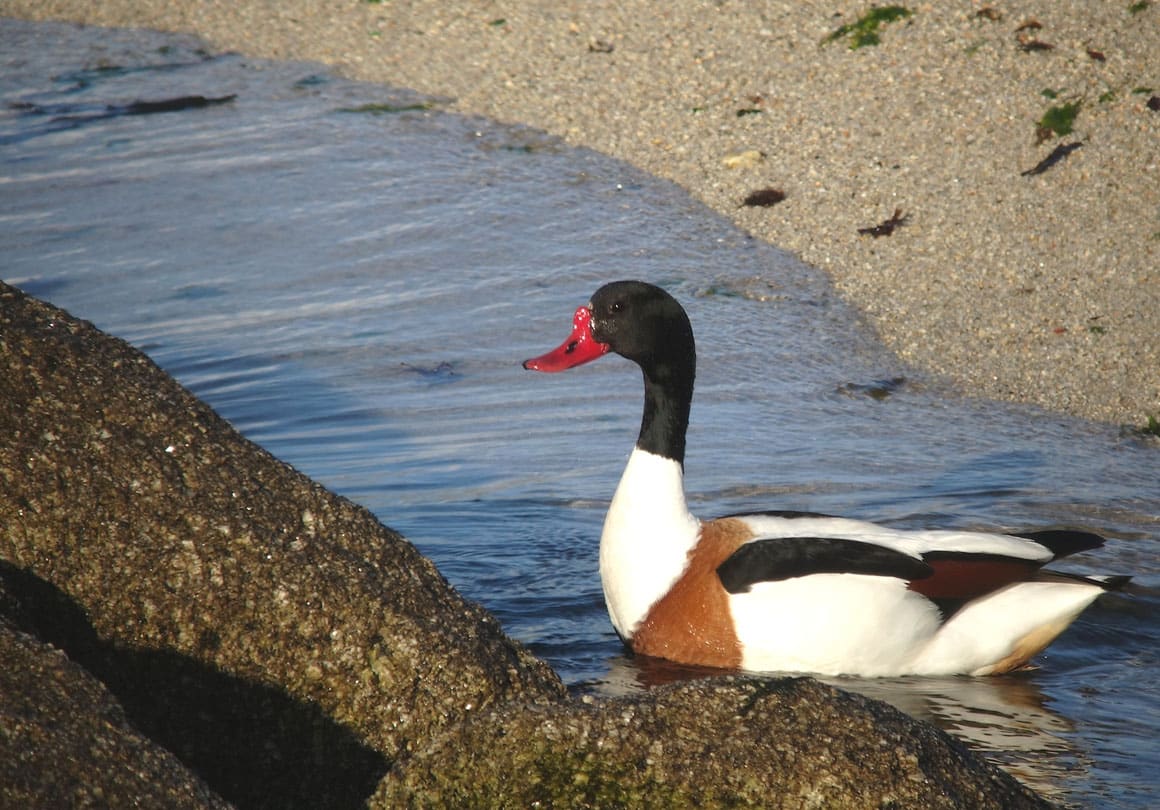
He who lets himself be observed
Shelduck
This large duck, whose silhouette is reminiscent of a goose, is easy to spot. Its bright colors (dark head and neck with green highlights, white, black and brown body, red legs and beak) make it a bird that doesn't go unnoticed. Fairly shy, it's easy to spot, particularly in spring during courtship, and even more so in June or July when it's taking its numerous offspring for a walk. It's a moving sight to see these parents so attentive to their young. Shelducks can be seen all along the coast, as well as on nearby ponds. They are equally at home on beaches, rocky areas and marshes. They can be seen almost all year round, although many birds leave our region for a time in midsummer.
The little "grand voyageur
Sanderling
This small wader, about the size of a starling, takes on different colors depending on the season. Pale gray back and white belly from October to April. Its back and wings are adorned with golden feathers from May to September. The Sanderling is impressive for several reasons.
Mainly native to northeastern Greenland (72 to 80° north), it frequents our beaches almost all year round, from late July to early June. Some birds only stop for a few days on their long migratory journey, then head for the coast of Africa (as far south as South Africa) and make the return trip in April-May. These birds can cover up to 30,000 kilometers a year. Other, "lazier" birds are content to spend the winter on our coasts.
They feed in large groups on our beaches, sometimes exceeding a thousand birds. In flight, they form compact groups of birds with white and silver reflections, depending on the light. They are very loyal, returning to the same beaches each year to spend the winter. When describing this bird, an anecdote regularly comes to mind. It concerns a young sandpiper born near the coast of northeast Greenland (Zackenberg, 74° N) in early July 2013. I had the opportunity to observe this same bird on a beach in Plounéour-Trez (Kerurus) on September 18 of the same year, thanks to the colored markings (rings) on its legs. Then, on the following October 31, another observer spotted it on a beach in Namibia (Walvis Bay), just north of South Africa. This anecdote means that this little bird (around 50 grams when it flies) is capable of covering between 12 and 15,000 km in just a few months, and doing the same thing again in the spring.
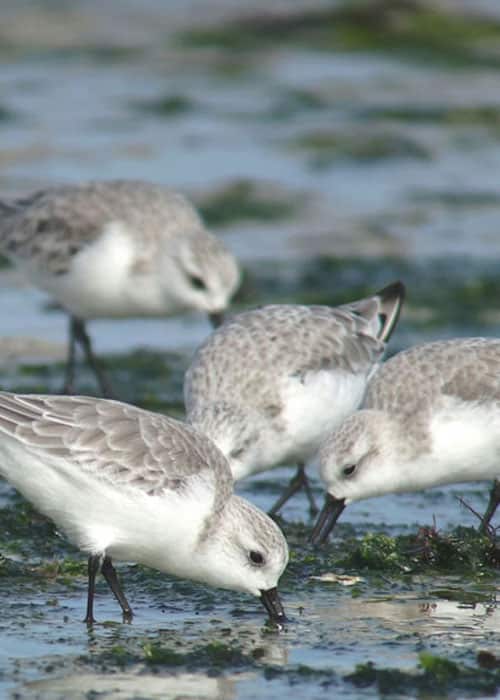
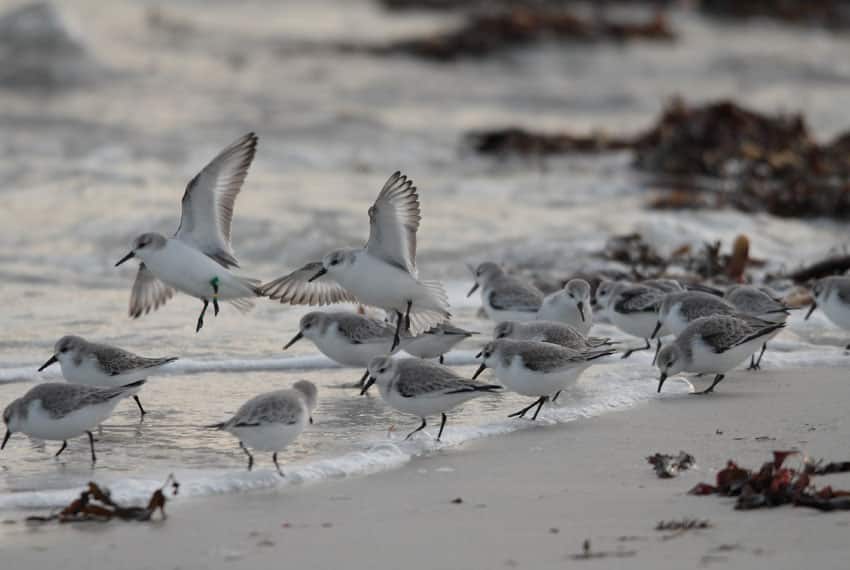
Click, clack, it's in the box!
Bird photos
Is your camera charged? Your lenses ready? And even more... your eyes are on the lookout?
To help you spot the birds that nest or stop over on our coasts, here are a few shots by Pierre Léon, taken on the Côte des Légendes.
To share your best photos taken at the destination, tag them with "#cotedeslegendes" on Instagram or Facebook.
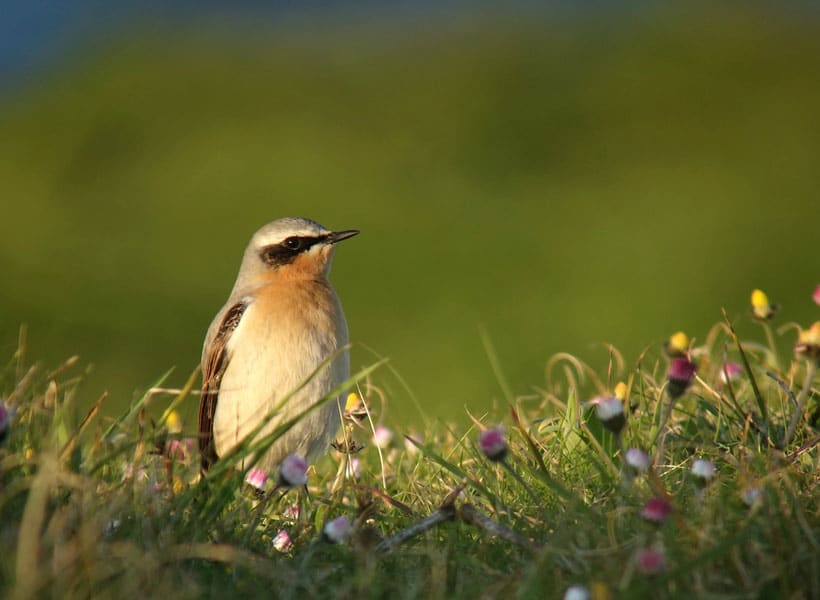
Common wheatear
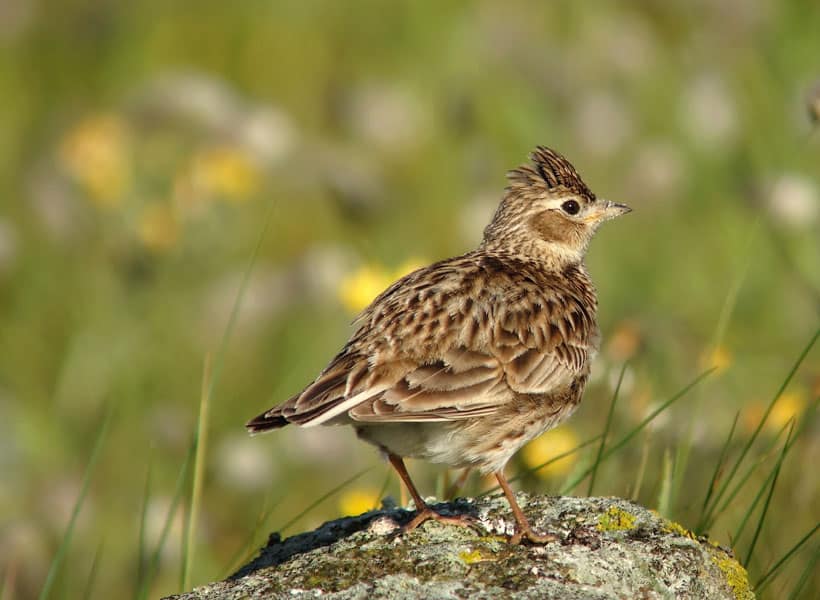
Skylark
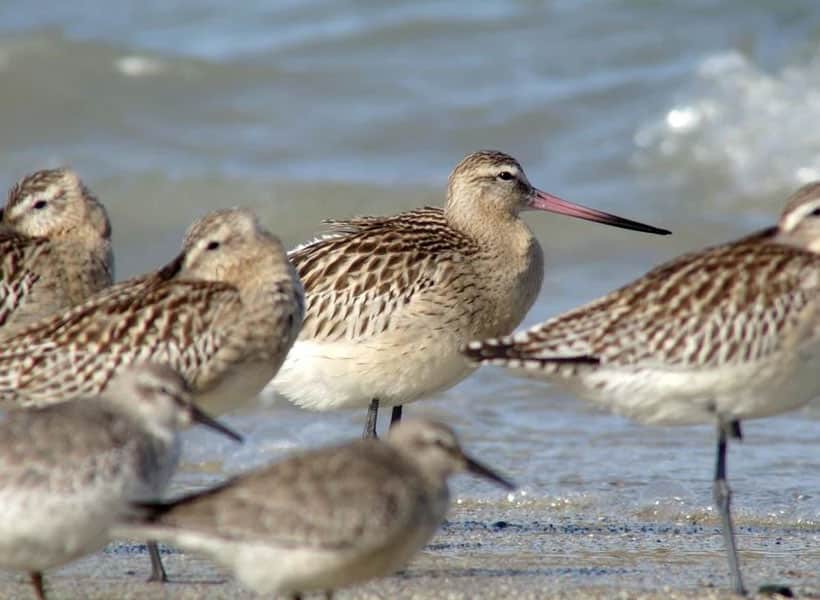
Red-headed bass
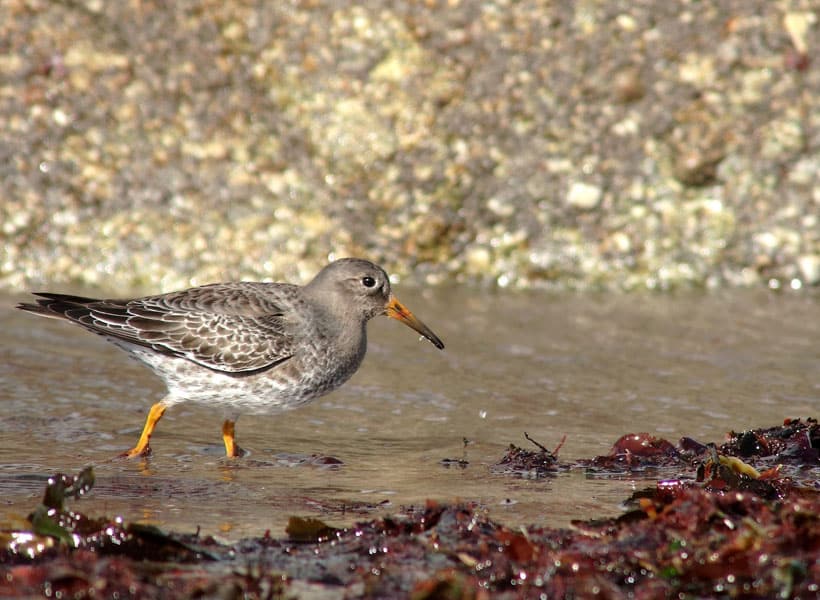
Purple Sandpiper
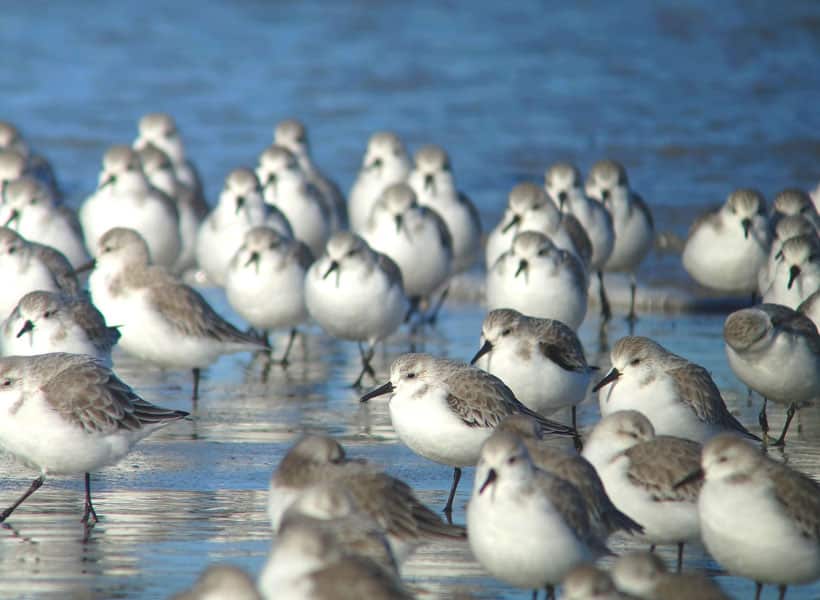
Sanderlings
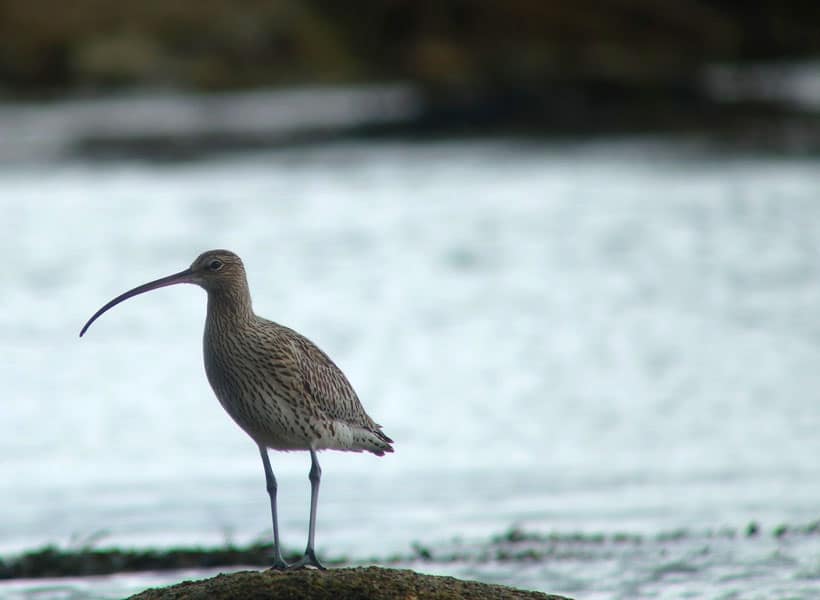
Curlew
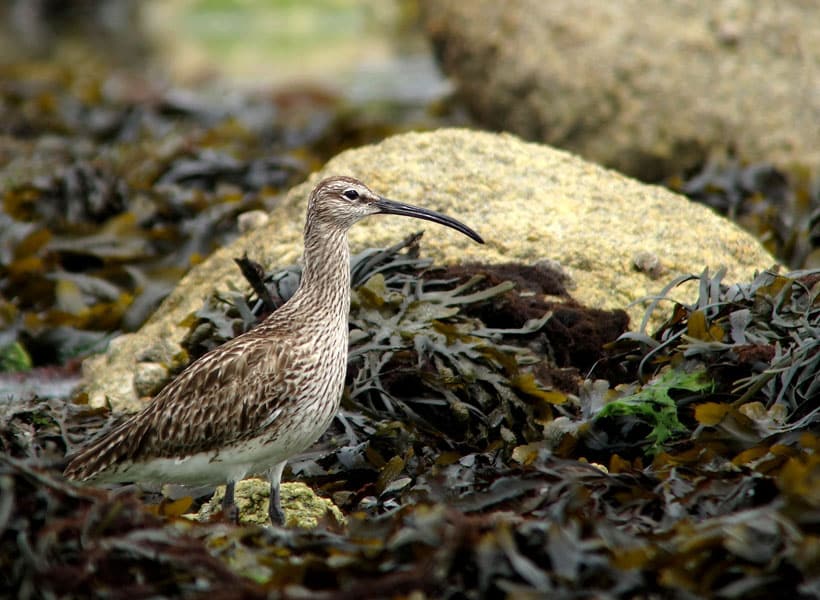
Whimbrel
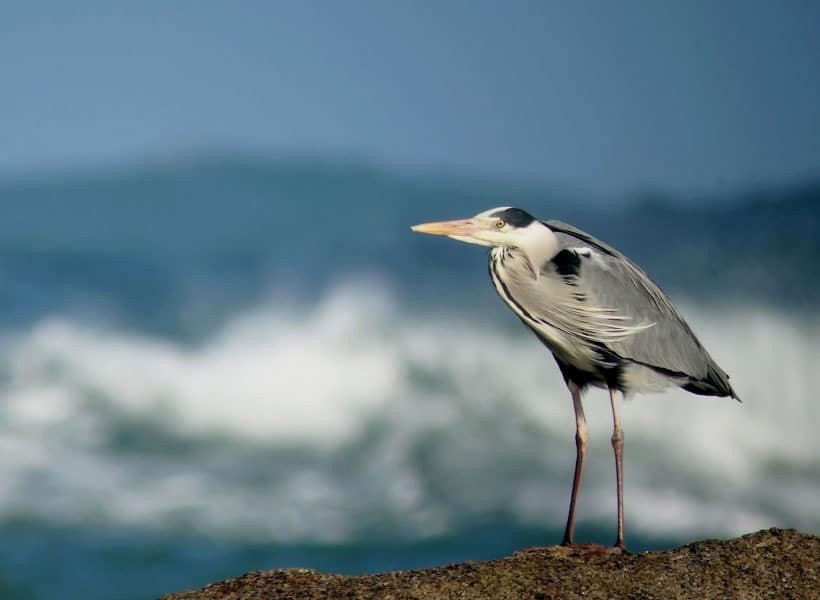
Grey heron
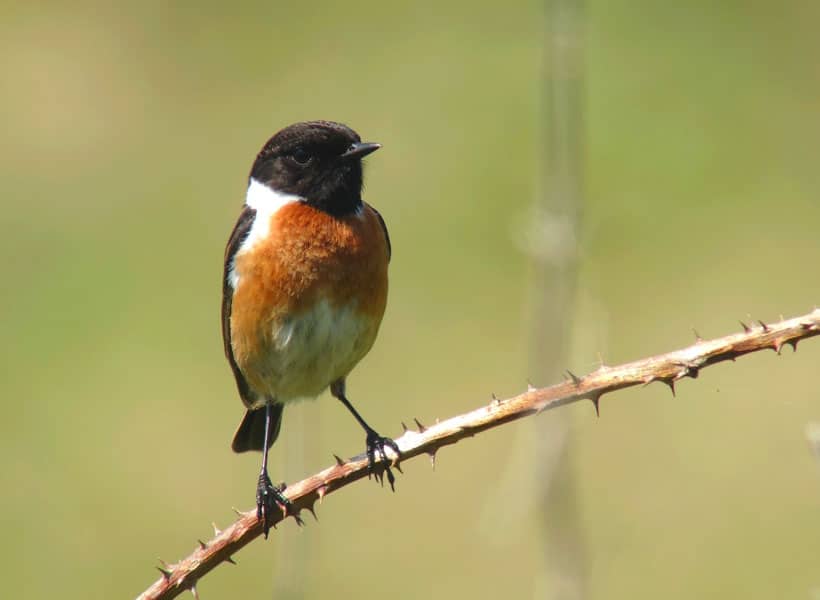
Whinchat
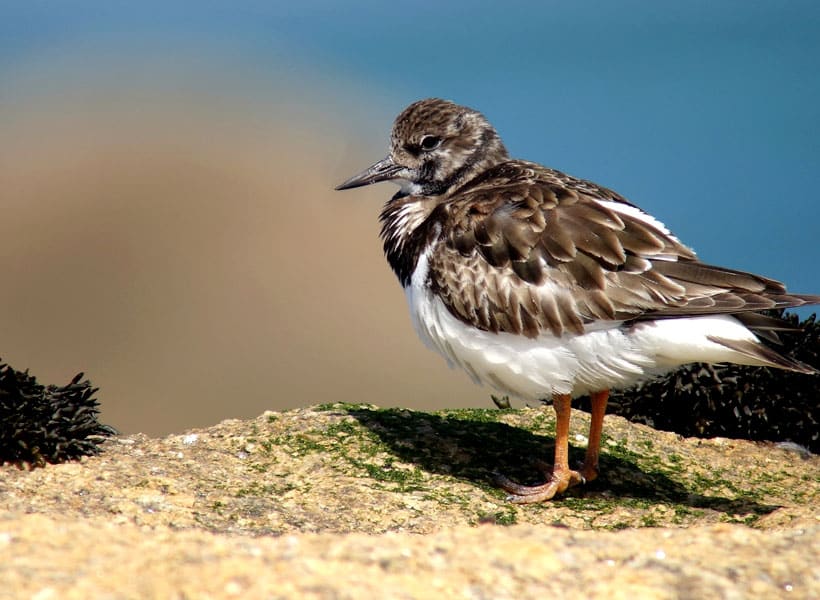
Collared turnstone
Going further
It's essential to consult the excellent faune-bretagne.org website, which lists all the wildlife species found in Brittany. Search the index for Finistère, then Goulven, Guissény or Trémaouezan, and discover the wealth of wildlife on the Côte des Légendes.
